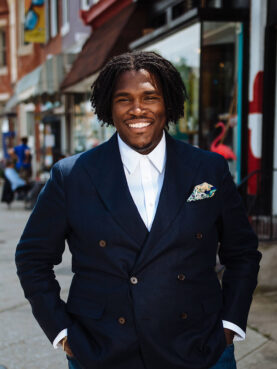Matthews ended up returning to church after his years away — the pandemic, he said, and the accompanying isolation eventually “pushed” him back to church. He found a community with progressive theology and an anti-hierarchical model, but he knows not everyone will find a church to call home. Outside of religious institutions, Matthews believes Black nones will need to consider what groups will be responsible for generating collective action.
“For us to see the type of change we want to see in the world around social justice issues, around racism, sexism, homophobia, it will take collectivist work,” he said.
In some places, Black-centered institutions offering community and activism have already emerged. Around 2010, Fibby used social media to connect with other Black Americans who, like him, were looking for belonging on the other side of religion. Many of those online connections have translated to long-term in-person friendships. And as the leader of the D.C. chapter of the Black Secular Collective, Fibby connects with like-minded individuals through regular meals, volunteer work and participation in marches and protests.
Teddy Reeves. (Courtesy photo)
Shelton also voiced the need for institutions to galvanize Black people around issues of racial inequality.
“When Black folks leave organized religion, and they have their reasons for doing so, no question about it, but what does that mean for African Americans and mobilization to address long-standing disparities?” he asked.
While Reeves echoed concerns about the importance of physical meeting spaces for social change, he also said it’s an “amazing time for Black faith.” It’s a season of change, and perhaps a time of reckoning, he said, as millennials refuse to put themselves in spaces that no longer serve them.
“This generation is following spirit,” said Reeves. “And if spirit is leading them outside the walls of our churches, and outside of the walls of our temples, and outside of the walls of our mosques, it begs our institutions to figure out: Are they listening to spirit and the new ways this spirit may be moving?”
This article originally appeared here.


